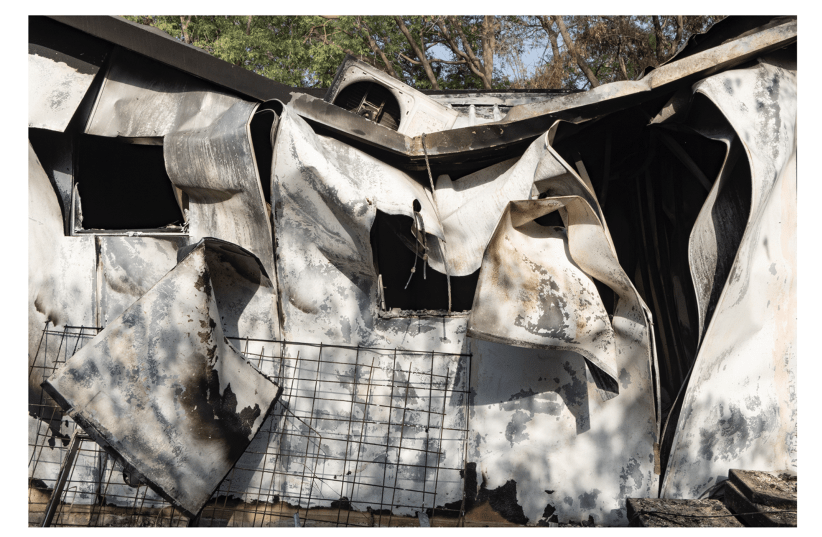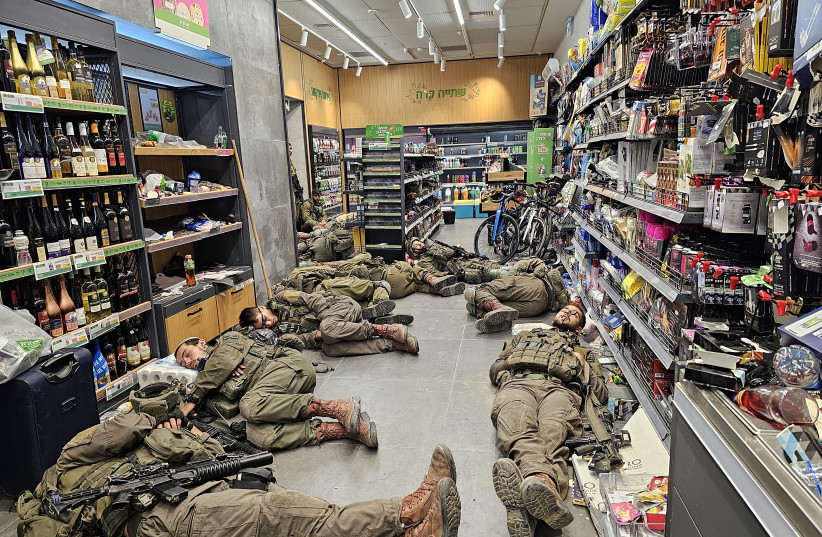Over 100 Israel-based photographers collaborated to create “The Southern Album,” a new exhibit at the Petah Tikva Museum of Art, showcasing the history of the Western Negev region from the 1950s through the atrocities of October 7.
The exhibit, which debuted last week, will last for six months — a deviation from the usual four-month-long exhibits the museum hosts. Featuring 150 series of photographs, installations, and texts, the exhibit narrates the story of southern Israel before and after the October 7 massacre carried out by Hamas terrorists.
In addition to the exhibit itself, the museum will host workshops and lectures with some of the photographers visiting to speak about the intersection of photography today and trauma.
The exhibit was organized by Prof. Dana Arieli, who said she started the project as a way to commemorate her friend Gideon Pauker from Kibbutz Nir Oz, who was murdered on October 7, less than a week before his 80th birthday.
“When something’s traumatic, you have to work or do something,” Arieli said.
Arieli got started by posting on Facebook in hopes of connecting with others who would be interested in doing a commemorative exhibit post-October 7. She soon received nearly 200 portfolios of interested photographers.
Through Arieli’s work, “The Southern Album” developed into three formats: a Facebook diary, a printed book of photographs and essays, and the current exhibition.
One photographer, Miki Kratsman, shared his October 7 story in the exhibit. Kratsman’s aunt Ophelia was kidnapped from Kibbutz Nir Oz into Gaza by Hamas terrorists. She was later released in the November hostage exchange deal.
His photograph, entitled “In Aunt Ophelia’s Neighborhood,” shows a modest home in the kibbutz melting and burning as it collapses in on itself.
“These are the kinds of things that need to be in a museum,” Arieli said of the photograph. “You’re looking at the destruction of Nir Oz.”
Vividly depicting the devastation of the kibbutz, the burning home photograph is an enigma, and creates dialogue, Arieli said.
“You can almost smell the photo,” she said, referring to the charred home in the image. Another photograph, entitled “Funeral of Five Members of the Kutz Family who were Murdered in Kfar Aza,” depicts a highly emotional scene from the funeral of a family killed in the attacks.
The photographer, Avishag Shaar-Yashuv, explained that soon after October 7, she traveled to the Gaza envelope to take photos and check on her friends whom she hadn’t heard from. She soon learned that her friends and their children were murdered.
Shaar-Yashuv, who had previous experience photographing funerals, tried to maintain her “poker face” as she took pictures at the Kutz family’s funeral, but it was impossible, she said.
“I tried to focus and also wipe the tears at the same time,” Shaar-Yashuv said.
The photo in the exhibit paints a vivid picture of the Kutz family funeral: family and friends sobbing over bright, colorful flowers, with IDF soldiers in the background sharing in their sadness.
Another image Arieli highlighted depicted a group of soldiers lying on the floor of a grocery store, using toilet paper rolls and backpacks as pillows. This photo was taken at 8:30 a.m. near Kfar Aza on October 8, when the soldiers had one hour to rest.
Collaborations behind the project
Arieli collaborated with Irena Gordon, the chief curator of the museum, to execute this project. The two had dreamed of working together, and when Arieli approached Gordon with this idea, Gordon immediately connected with it.
“It met my wishes to do something social, historical, and facing the moment, but also probing photography as a medium in a serious way,” said Gordon.
According to Arieli, executing the exhibit had a few challenges. The biggest challenge Arieli and Gordon faced was working with 107 photographers, which was quite a feat, Arieli said. Arieli had not expected the project to become so large and she said they had to adapt to accommodate the sheer amount of files artists were sharing.
In comparison to Arieli’s typical holocaust study and research, the recent history of October 7 presented a new challenge.
“The ‘historical period’ is so short now,” she said.“How do you commemorate an event that is still ongoing?”
Originally, Arieli wanted “The Southern Album” displayed in the Kibbutz Yad Mordechai Museum, located 3.2 km north of the Gaza Strip. After this museum’s roof was hit by missiles, exhibiting the album there was no longer possible.
Now displayed in the Petah Tikva Museum of Art, Arieli, and Gordon have set intentions for this exhibit and its viewers. She said the museum itself is a crucial part of the exhibit’s impact.
“The museum is not this detached place, but rather it’s a place which acts as a beautiful part of the community,” Gordon said. “We want people to see themselves and what they’ve been through represented here.”
Arieli and Gordon noted that they want the museum to act as a reflection for those suffering. The two said the museum is a “safe space” and a “place for healing.” After experiencing the horrors of October 7, Gordon found solace in this project, she added.
“This is part of how we are coping with it all,” Gordon said.

